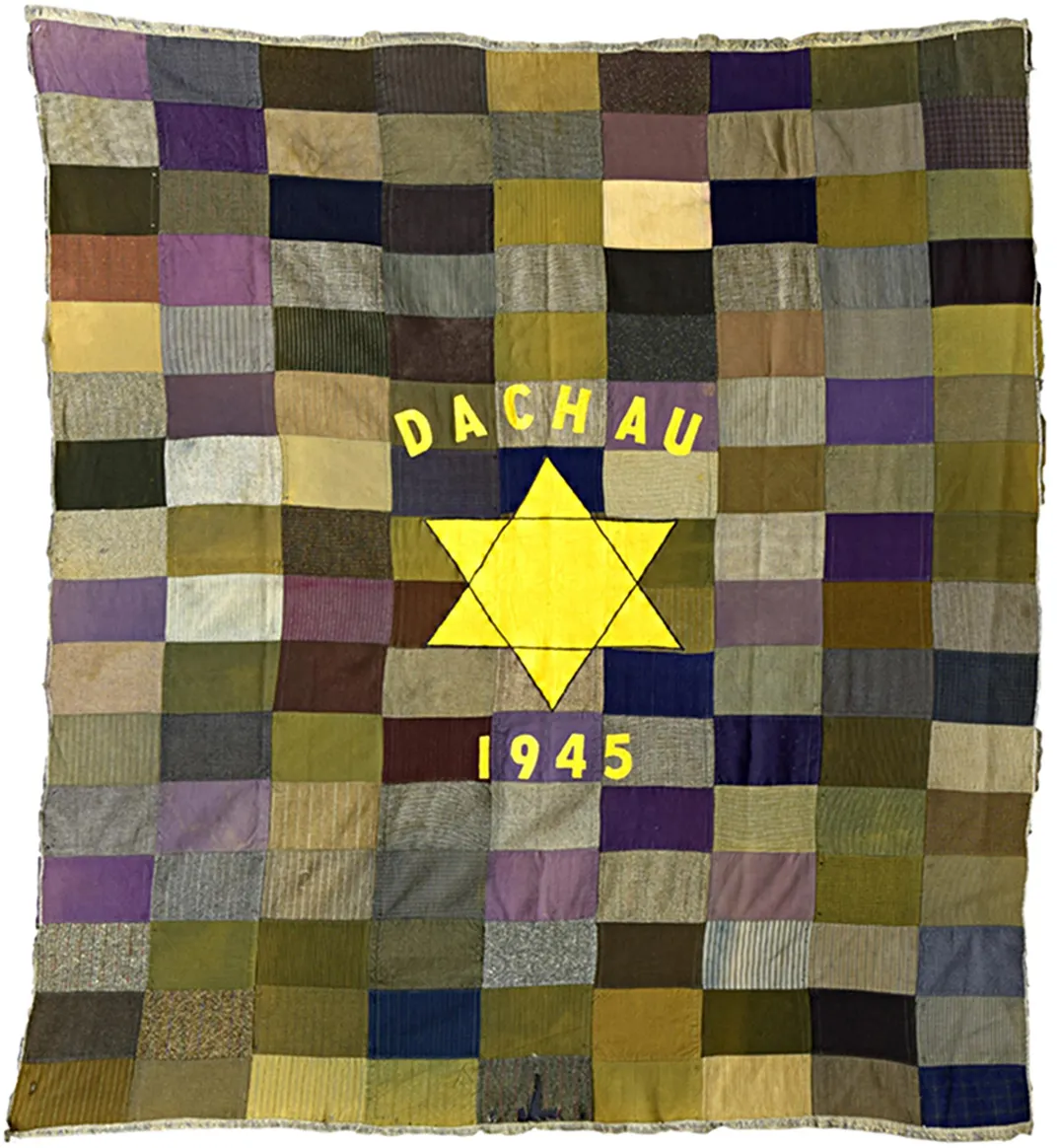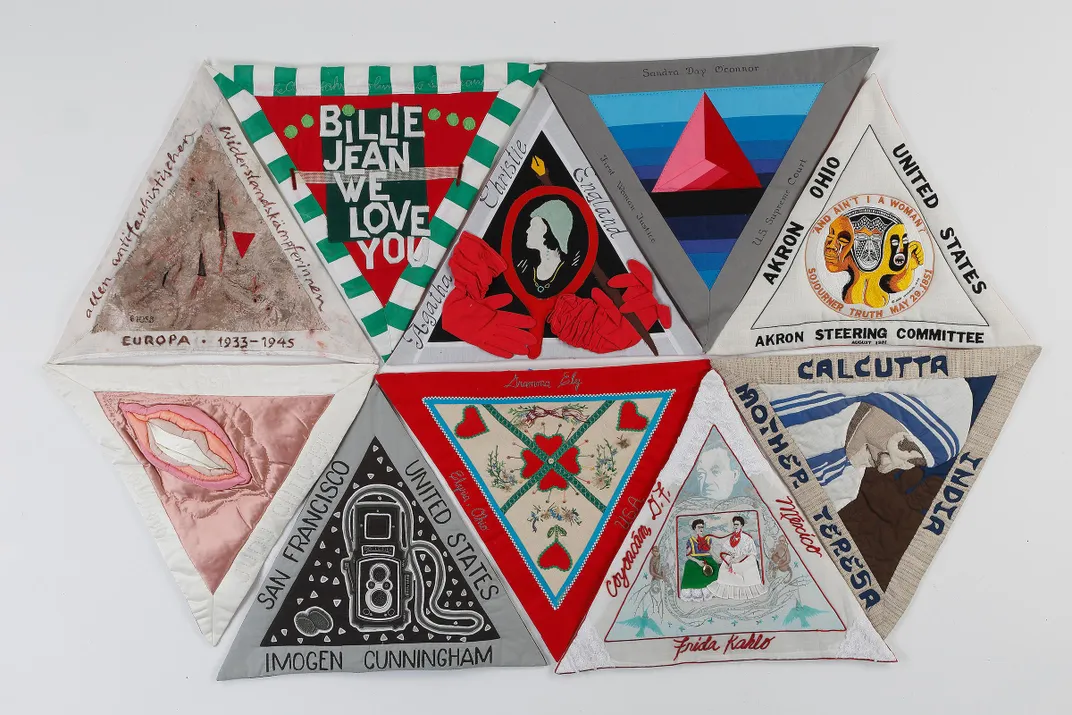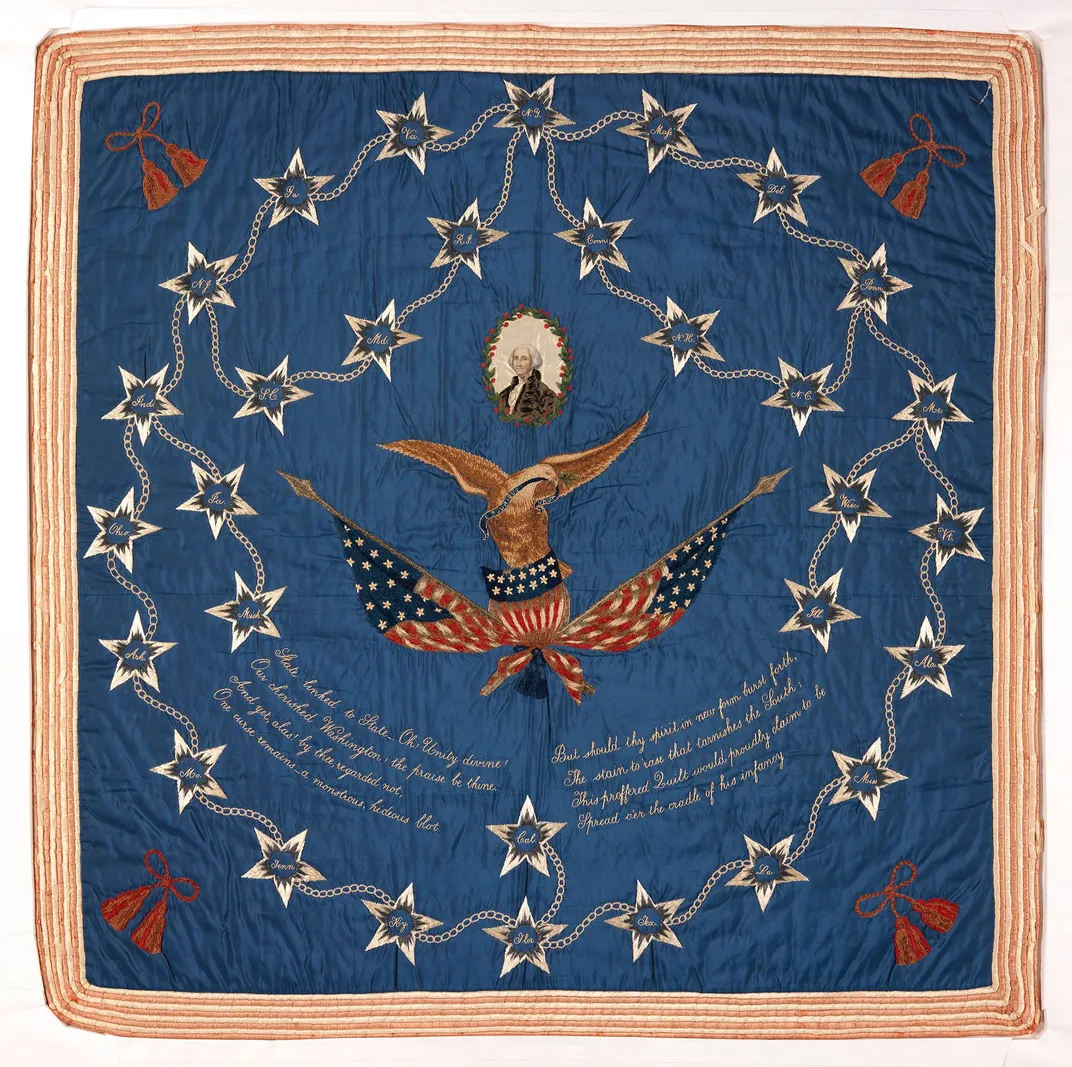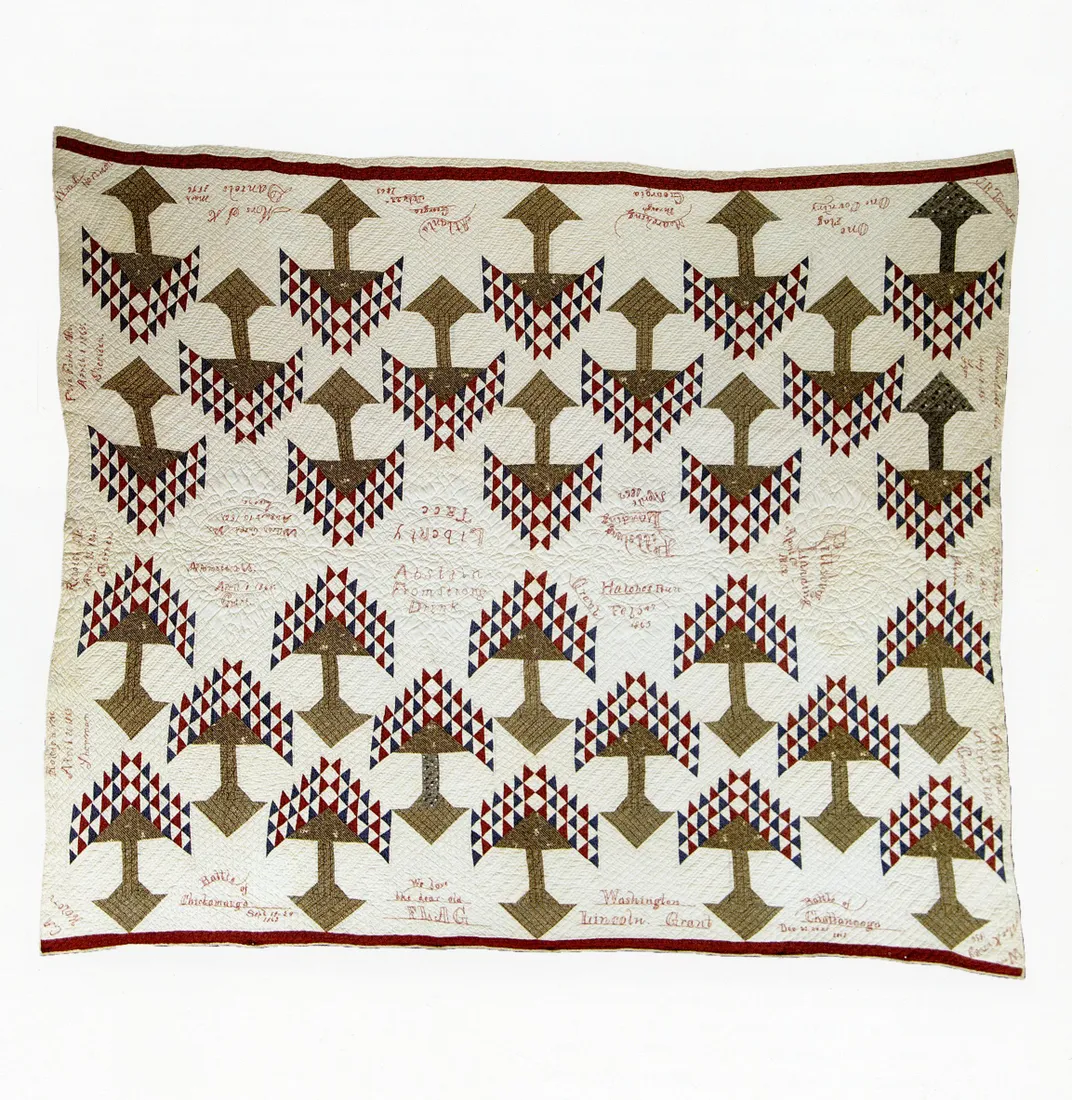The Surprisingly Radical History of Quilting
Works on display in an Ohio exhibition highlight political art by marginalized people
:focal(981x953:982x954)/https://tf-cmsv2-smithsonianmag-media.s3.amazonaws.com/filer/53/1e/531e4dc2-92ba-4b90-b88f-879b489b34d1/cleveland_hendricks_crazy_quilt_1.jpg)
Handmade quilts fulfill an array of purposes. They can be practical necessities for cold winter nights; family heirlooms that bring back memories; or, as an exhibition at Ohio’s Toledo Museum of Art reveals, a form of creative, sometimes biting, political art.
Titled “Radical Tradition: American Quilts and Social Change,” the show features about 30 works that range from traditional to contemporary textile art, as well as some mixed-media and virtual takes on the quilt form, per Sarah Rose Sharp of Hyperallergic.
Exhibition highlights include a panel from the AIDS Memorial Quilt and a piece crafted out of suit fabric by liberated survivors of the Dachau concentration camp. Also of note is The Storm, the Whirlwind, and the Earthquake, a life-size quilted portrait of abolitionist Frederick Douglass by artist Bisa Butler.
As Butler told Liz Logan of Smithsonian magazine earlier this year, her vibrant depictions of black figures aim to “give … subjects back an identity that’s been lost.” Independent curator Glenn Adamson added, “Butler is elevating the status of her subjects by making portraits, and also elevating quilting—which is an African American craft tradition—by adding portraiture to it.”
Another work in the Toledo show is attributed to a member of the Freedom Quilting Bee, a black rural cooperative in Alabama that supported participants in the 1960s civil rights movement. The piece helps tell the story of how quilting became recognized as a serious art form. According to the Encyclopedia of Alabama, the group’s creations earned accolades from Vogue, drew the attention of such artists as Lee Krasner and sparked a nationwide quilting revival.
Many of the quilts featured in “Radical Tradition” explicitly address the ways in which products of domestic labor, which is often performed by women and people whose work is undercompensated, are rendered invisible. One 1987 piece by Jean Ray Laury satirizes a famous 1963 anti-feminist speech by Arkansas Senator Paul Van Dalsem. Other quilts showcase a variety of styles and themes embraced by 19th-century craftspeople, including the abolition of slavery and Temperance Movement. One late 19th-century “crazy quilt”—a chaotic style without repeating features—uses media including silk ribbons and portraits of political leaders cut from campaign banners.
“A lot of the more historical 19th-century quilts in the exhibition are created by networks of quiltmakers,” curator Lauren Applebaum tells the Observer’s Karen Chernick. “That’s something that has stretched through history.”
Other works go beyond the traditional quilt form. In a section of Aaron McIntosh’s Invasive Queer Kudzu installation, vines created out of fabric, wire and other materials wrap themselves around a room’s furniture. Ben by Faith Ringgold, meanwhile, is a soft mixed media sculpture of an unhoused man.
“In the context of the coronavirus pandemic and our country’s current reckoning with racial injustice, ‘Radical Tradition’ takes on a particular urgency and relevance,” says Applebaum in a statement. “Quilts have always engaged the pressing social and political issues of their time. They have been deployed throughout history by marginalized people to confront instances of violence, oppression and exclusion.”
Prior to the exhibition’s opening, the museum organized a “COVID-19 Virtual Quilting Bee.” Participants from across the United States submitted almost 100 quilt squares ranging from abstract to representative pieces. Organizers “stitched” the squares together digitally so they could be viewed on the museum’s website. One participant, Nettie Badgley of Yorkville, Illinois, wrote that she created her square using strips left over from a cooperative project that made masks for a local hospital.
“To me it represents the chaos of emotions many of us are experiencing,” she explained. “Up close, I see each individual fabric, different from one another like people. But then from afar I see a beautiful color collaboration that represents all of us coming together to make a difference."
“Radical Tradition: American Quilts and Social Change” is on view at the Toledo Museum of Art in Ohio through February 14, 2021.
/https://tf-cmsv2-smithsonianmag-media.s3.amazonaws.com/accounts/headshot/Livia_lg_thumbnail.png)
/https://tf-cmsv2-smithsonianmag-media.s3.amazonaws.com/filer/9f/bb/9fbbb260-40fa-4697-85a4-113ca0c6c2f2/bisa_butler_thewhirlwind_0.jpg)

/https://tf-cmsv2-smithsonianmag-media.s3.amazonaws.com/filer/6b/1f/6b1f96dc-dbcb-419a-a55e-3414e9a14103/mcintosh_queer_kudzu_0.jpg)



/https://tf-cmsv2-smithsonianmag-media.s3.amazonaws.com/accounts/headshot/Livia_lg_thumbnail.png)